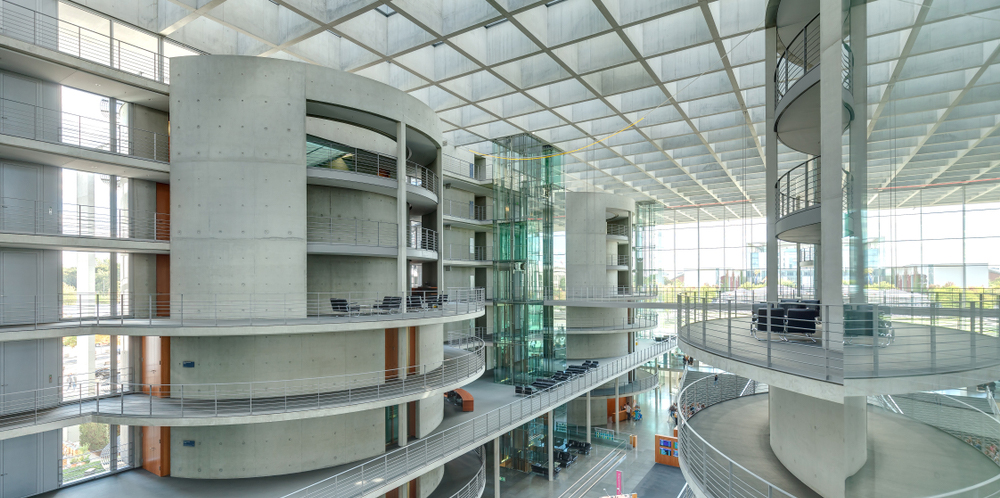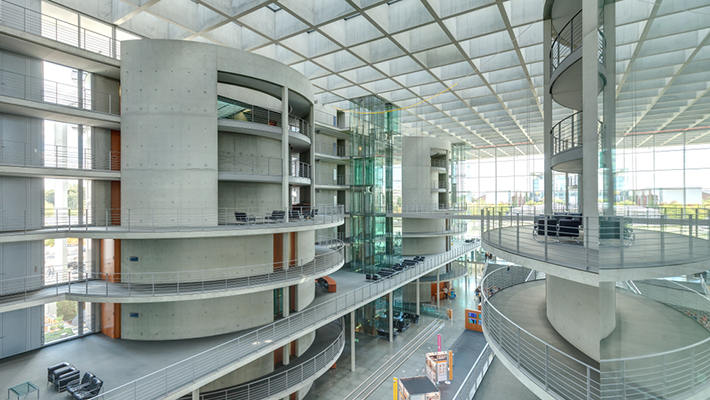
From raising questions about shared offices and open floor plan designs to increased telecommuting and new means of client and employee interaction, the COVID-19 pandemic continues to disrupt the office setting. Rethinking architecture, construction, furniture placement and design, alongside greater integration of technology, will shape the workplace of the future.
How should workplaces adapt to the current environment and the changes still to come?
Four FIU Business alumni and an FIU alumna, including professionals in real estate, construction and office design, engaged in a conversation about the emerging workplace as part of the BizPanther Game Changer series, a new virtual business event series designed to build community and showcase the ideas of FIU Business alumni.
“Is the office space dead? No, it will never be,” said moderator Maureen Mascaro (BBA ’08),
founder and chief project officer of The Common Area. “Today we have to understand what the office space of the future will be like, from determining the proper length of leases and the scope of a real estate portfolio to office design.”
Technology was critical in allowing companies to pivot into remote working environments, sometimes in 24 hours. Now, especially in the audio-visual sector, it must be increasingly robust to support the new virtual world.
“While we’re seeing more virtual calls, there are teams that cannot collaborate,” said Marlene Liriano (BASc ’89), managing director and principal of IA Interior Architects. “We have a firm that is developing a series of avatars that allow us to have a session where employees can write on a whiteboard, share and work on materials together,” whether they are in the office or working virtually.
One of the most serious threats to employees and companies impacted by the coronavirus outbreak is the lack of face-to-face interaction intensified by working remotely.
Jose Diaz (BBA ’86), co-founder and co-owner of Compass Office Solutions, cited maintaining the corporate culture, establishing a plan for hiring as well as for returning to work, and keeping employees happy as the biggest challenges.
“What we’ve done is to try to subtly, but creatively, mimic the same activities that would happen in an office,” said Diaz. “For the morning coffee, instead of establishing structured calls, everyone sits down at the same time and each person brings their coffee. We have to create normal activities in a different way.”
The new reality of commercial real estate construction is now guided by changes to the construction code as well as requirements for new features and designated spacing to maintain the 6-foot social distance.
At Wellington Construction Group, clients are looking for guidance to establish a safe return to work environment, explained senior project manager JC Gomez (MBA ’13, BS ’04). Among the new features are mitigation screens and plexiglass dividers, touch-free faucets, foot door openers and removing common-area water fountains.
“The protocol that we want to implement is to make intelligent and well thought out investments, not a knee-jerk reaction to something that you thought was good idea,” said Gomez. He cautioned employers against making snap decisions that companies would regret later. “You can create an environment that is right immediately and is also reversible.”





